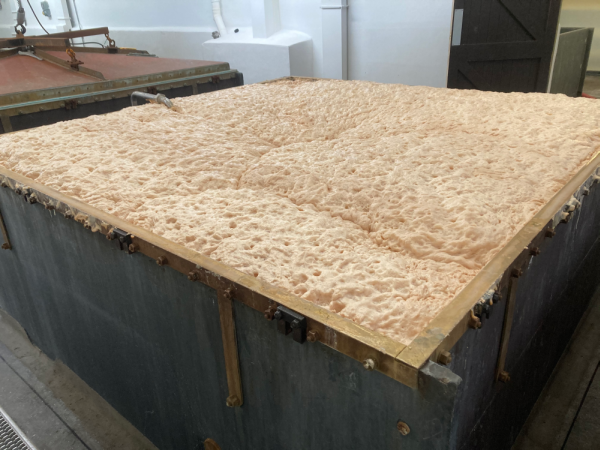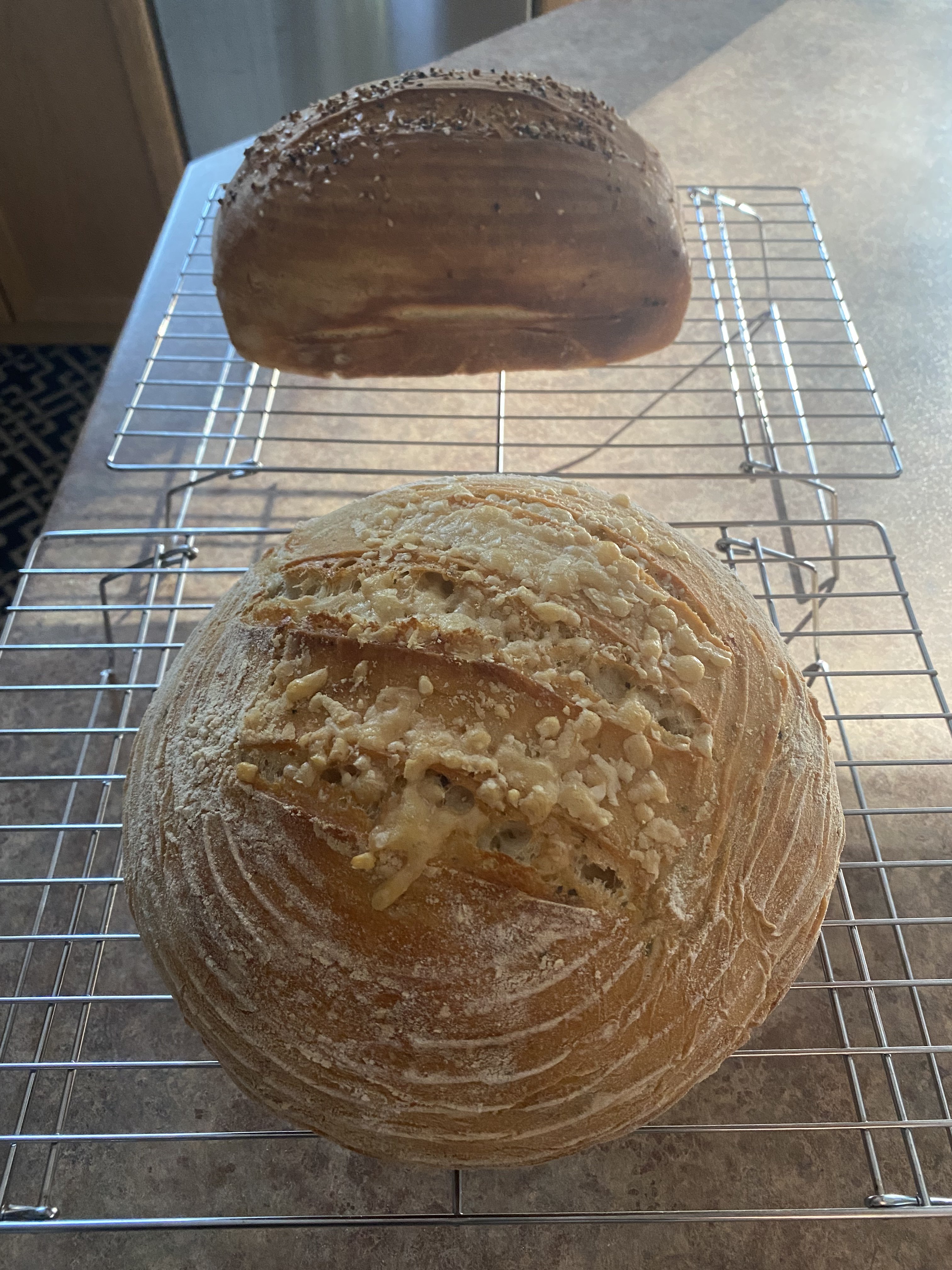pdhirsch
Well-Known Member
I brew beer and I bake bread. Lately I've become interested in medieval bread recipes, many of which call for "ale barm." I think that's what we might call krausen -- apparently they used to skim off some of the scummy foam that appears on top of fermenting ale, which evidently contains enough live yeast that you can use it to bake bread.
Now, I have a five-gallon batch of brown ale which is almost done; I plan to bottle this coming weekend. I'm wondering if I can use the yeast sediment at the bottom of my carboy for bread baking, since I missed my chance to gather foam from the top (and anyway I'm not sure how I would have gathered it without risk of contamination).
Has anyone else done this? If so -- how much yeast sediment did you use? Or did you skim foam off the top? Is it feasible to save the yeast sediment and store it in my fridge for a few weeks (since I bake bread more frequently than I brew beer)? The ale yeast is Danstar Nottingham in case it matters.
I'll almost definitely go back to baking with Saf Instant Yeast in the long run, but just for fun I'd like to try using ale yeast once or twice... any comments or advice would be welcomed. Thanks!
Now, I have a five-gallon batch of brown ale which is almost done; I plan to bottle this coming weekend. I'm wondering if I can use the yeast sediment at the bottom of my carboy for bread baking, since I missed my chance to gather foam from the top (and anyway I'm not sure how I would have gathered it without risk of contamination).
Has anyone else done this? If so -- how much yeast sediment did you use? Or did you skim foam off the top? Is it feasible to save the yeast sediment and store it in my fridge for a few weeks (since I bake bread more frequently than I brew beer)? The ale yeast is Danstar Nottingham in case it matters.
I'll almost definitely go back to baking with Saf Instant Yeast in the long run, but just for fun I'd like to try using ale yeast once or twice... any comments or advice would be welcomed. Thanks!








![Craft A Brew - Safale BE-256 Yeast - Fermentis - Belgian Ale Dry Yeast - For Belgian & Strong Ales - Ingredients for Home Brewing - Beer Making Supplies - [3 Pack]](https://m.media-amazon.com/images/I/51bcKEwQmWL._SL500_.jpg)




















































